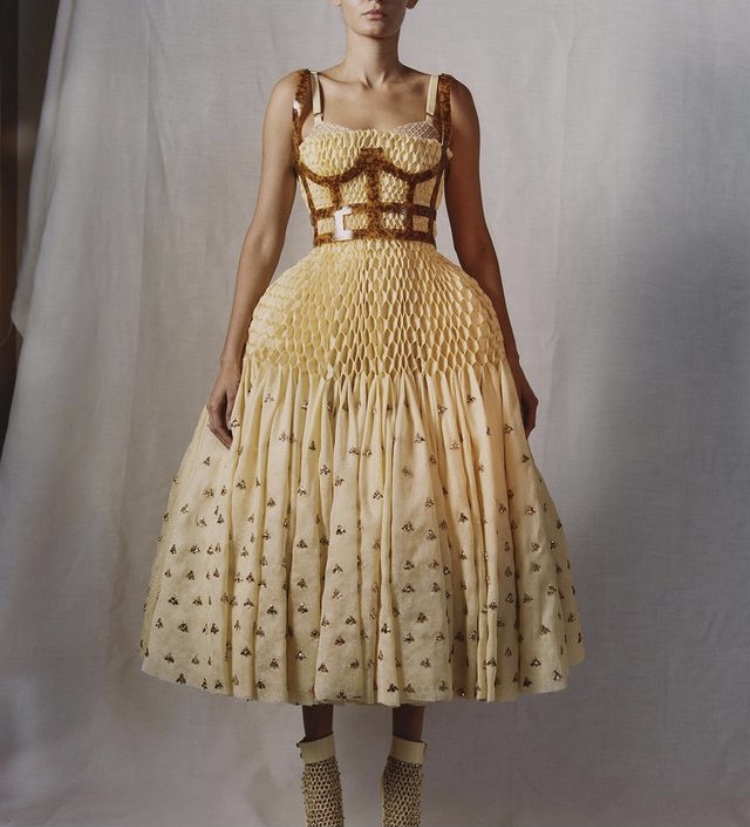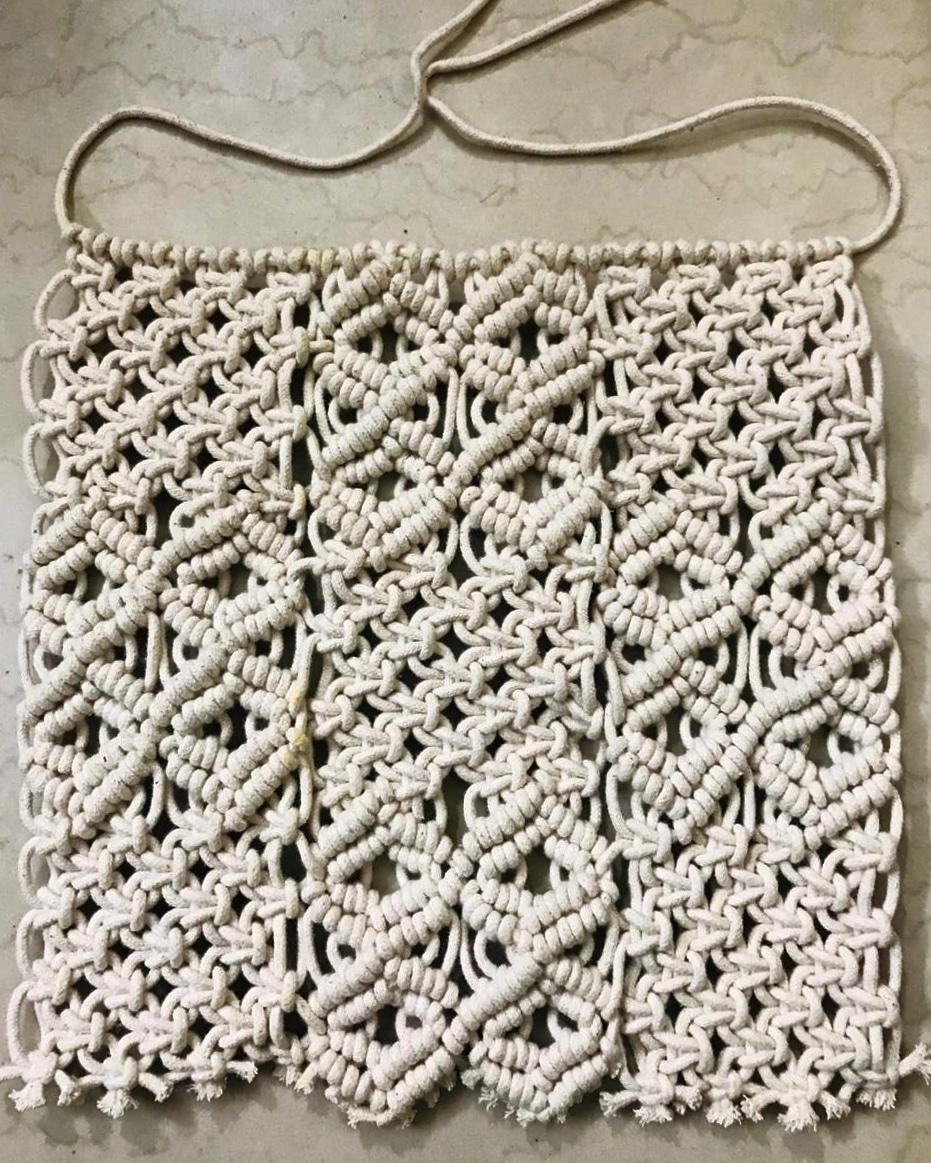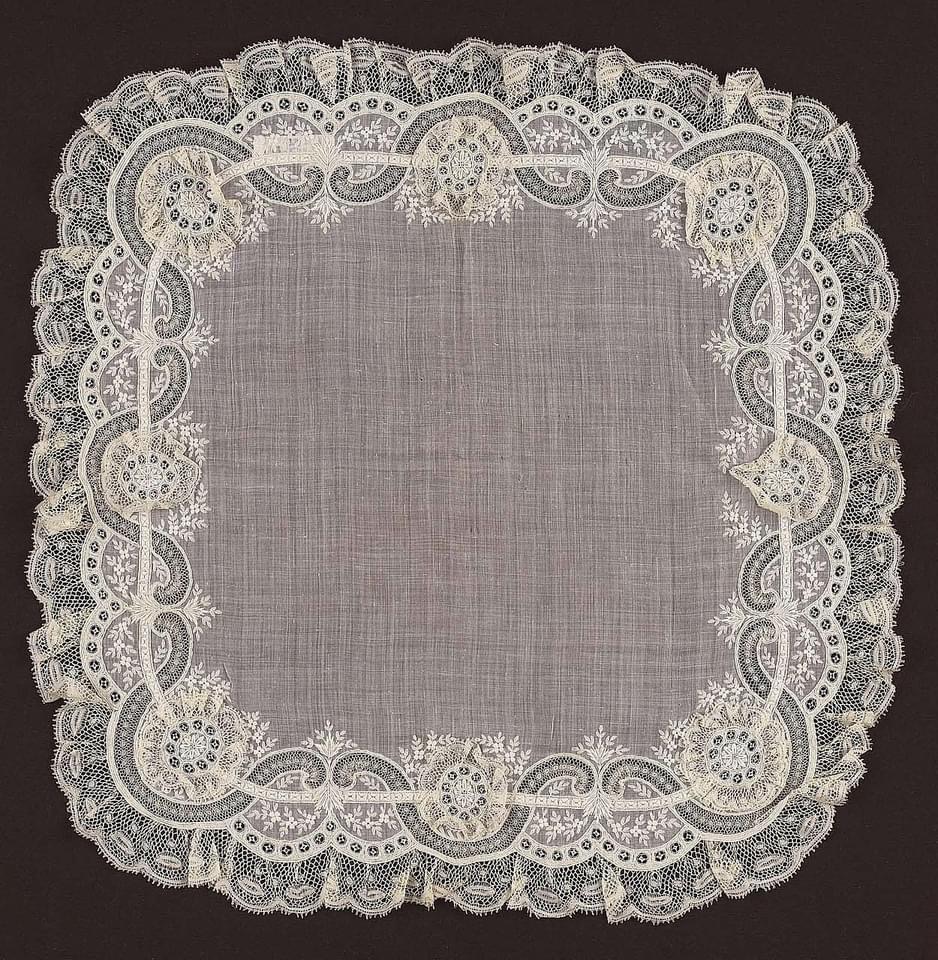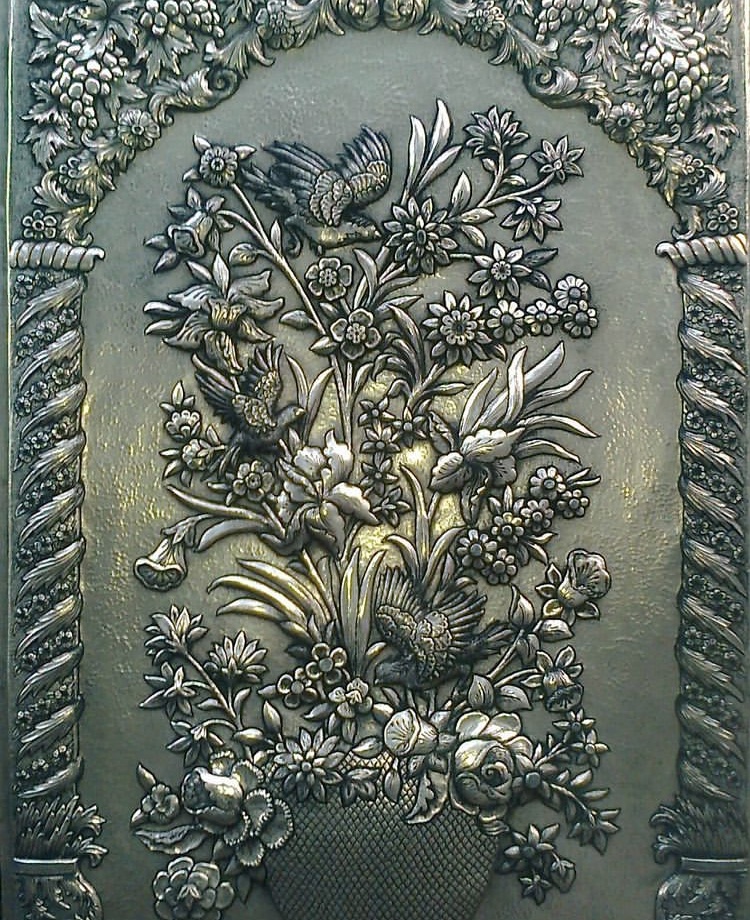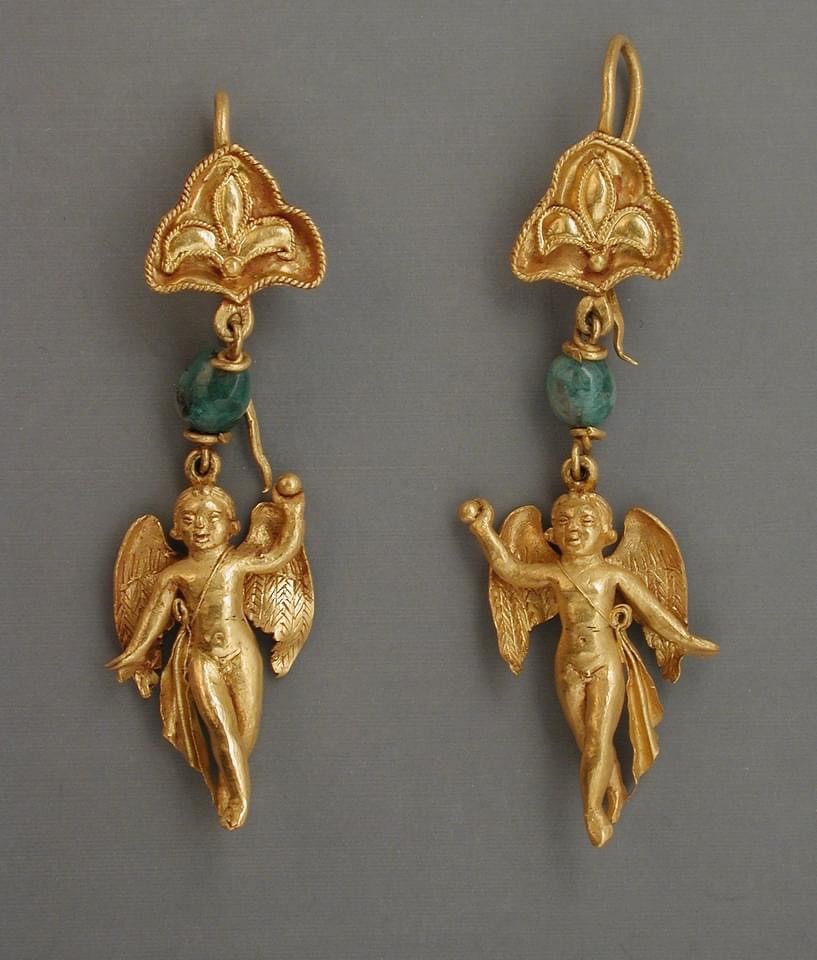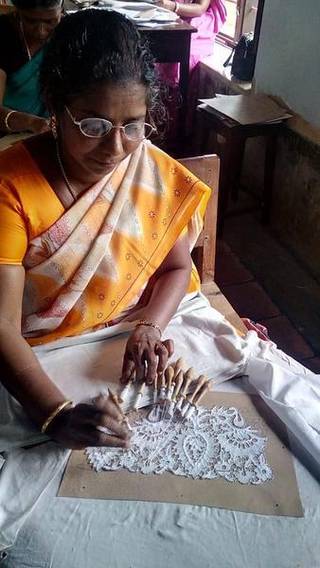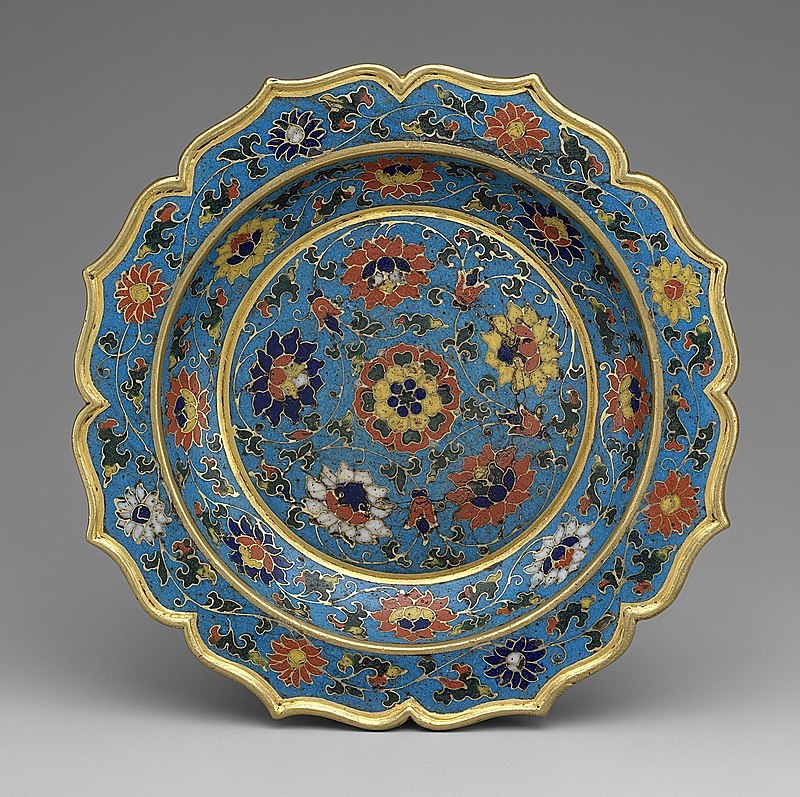06 Aug Macrame, a Knotting Technique with a Long History and Great Appeal
Posted at 00:56h
in Art, Artisan, Culture, DESIGN, History, Sustainability, Technique
by Nidhi Garg
0 Comments
[vc_row css_animation="" row_type="row" use_row_as_full_screen_section="no" type="full_width" angled_section="no" text_align="left" background_image_as_pattern="without_pattern" css=".vc_custom_1628220473151{padding-right: 15px !important;}" z_index=""][vc_column offset="vc_col-xs-12"][vc_column_text]In 2019 we did a lot of research and development in hand knitting, knotting, smocking, and bead-making techniques. We worked with a group of women artisans in the villages of Western Uttar Pradesh in India. Before making the trip to these villages and meeting these women, I was under the impression that these techniques are almost similar to each other and created similar looks. However, once we worked with these masters, we learned about the nuances of different techniques and various design possibilities associated with them. Together with the artisans, we co-created beautiful and chic panels.
24 Jul Headgear, A Style Statement And Much More
[vc_row css_animation="" row_type="row" use_row_as_full_screen_section="no" type="full_width" angled_section="no" text_align="left" background_image_as_pattern="without_pattern" css=".vc_custom_1627102132598{padding-right: 15px !important;}" z_index=""][vc_column width="1/2" offset="vc_col-xs-12"][vc_column_text]Headgear in contemporary times is associated with the outdoors, with events like Ascot, or with pop culture. There are notable exceptions, like the clergy or royalty. And of course, other than where headgear is associated with religious affiliations, it is no longer de rigueur as a part of daily life. This wasn't always the case. There was a time when headgear was an essential part of apparel, denoting status, religion, and profession, right up to the early 20th century.19 Jul The History of a Little Piece of Textile, A Humble Hanky
[vc_row css_animation="" row_type="row" use_row_as_full_screen_section="no" type="full_width" angled_section="no" text_align="left" background_image_as_pattern="without_pattern" css=".vc_custom_1626672171131{padding-right: 15px !important;}" z_index=""][vc_column offset="vc_col-xs-12"][vc_column_text]A Humble Hanky -One of my earliest memories is my mother dabbing her lace-edged hanky with cologne and tucking it into her saree, along with her keys. To the little me, this seemed the height of femininity and grace. My mother kept her hankies, like precious keepsakes, in a box with a big bow on it. A few years later, an aunt gifted me a set of seven, one for each day of the week, embroidered with pixies and flowers. How delighted I was.28 Jun The Art of Jewelry: Important Historical Techniques
[vc_row css_animation="" row_type="row" use_row_as_full_screen_section="no" type="full_width" angled_section="no" text_align="left" background_image_as_pattern="without_pattern" css=".vc_custom_1624936967294{padding-right: 15px !important;}" z_index=""][vc_column offset="vc_col-lg-12"][vc_column_text]The Art of Jewelry: There is something about jewelry that engages even the most Spartan of women. You can see the sparkle of the stone and the metal reflected in their eyes as they bend over the counter. Because so much of the history of jewelry is tied up with culture and anthropology, innumerable craft techniques have sprung up around it because it is so desirable. We've examined some in our recent blogs. Today, in the concluding one, we will look at a few more. RECENT ARTICLES ON THE ART OF JEWELRYTHE BEAUTIFUL ART OF ENAMELED JEWELRY
READ MOREMICRO MOSAIC A POPULAR ART FROM THE 19TH CENTURY
Embossing: The Art of Jewelry
18 Jun Filigree the Lace in Jewelry
[vc_row css_animation="" row_type="row" use_row_as_full_screen_section="no" type="full_width" angled_section="no" text_align="left" background_image_as_pattern="without_pattern" css=".vc_custom_1624053242686{padding-right: 15px !important;}" z_index=""][vc_column offset="vc_col-xs-12"][vc_column_text]Filigree: In the miraculous world and history of jewelry, there is one technique done in precious metal, but visually exactly like lace. And that is filigree. As the etymology of the word suggests (filum =thread, granum=grain), filigree involves twisting and curling precious metal threads into elaborate designs. But that is a tiny part of the story of how complicated the process is.17 Jun Lace Making- A Cultural Craft of Europe
[vc_row css_animation="" row_type="row" use_row_as_full_screen_section="no" type="full_width" angled_section="no" text_align="left" background_image_as_pattern="without_pattern" css=".vc_custom_1623909223597{padding-right: 15px !important;}" z_index=""][vc_column offset="vc_col-xs-12"][vc_column_text]Lace Making: My fascination for handmade laces started three years back in the summers of 2018 when I searched for artisan groups in India to help us recreate old collected laces and trims from Europe. Until then, my knowledge of high-quality handmade laces possible to accomplish in India was limited only to cotton crochet work. However, to my surprise, we found groups of women based in small villages across different states of Southern India, practicing a variety of high-skilled European lace making techniques.07 Jun The Beautiful Art of Enameled Jewelry
[vc_row css_animation="" row_type="row" use_row_as_full_screen_section="no" type="full_width" angled_section="no" text_align="left" background_image_as_pattern="without_pattern" css=".vc_custom_1623043300818{padding-right: 15px !important;}" z_index=""][vc_column offset="vc_col-xs-12"][vc_column_text]Enameled Jewelry: In the story of my career, I've had much to do with the popularising of fashion jewelry in India. But that's another story, which I will tell one day. For the moment, I want to start a new blog series on the various genres of jewelry, not just in India but worldwide.28 May The Genesis of Draped Apparel in India
[vc_row css_animation="" row_type="row" use_row_as_full_screen_section="no" type="full_width" angled_section="no" text_align="left" background_image_as_pattern="without_pattern" css=".vc_custom_1622248632215{padding-right: 15px !important;}" z_index=""][vc_column offset="vc_col-xs-12"][vc_column_text]Draped Apparel: In our first blog in this series, we talked about the Indian tradition of wearing unstitched clothing from pre-Vedic times, possibly because applying a needle to cloth was believed to be polluting. [caption id="attachment_4173" align="alignleft" width="126"] A kid in a langot, still worn in India by traditional wrestlers. Image Source: https://www.danielmalikyar.com/kushti-india/[/caption]
Because of this belief, and probably because of the climate, India has always had a tradition of draped apparel, starting from the langot, a rectangular cloth worn as underwear. Interestingly. I remember my grandfather still wore a langot until the 1960s, as I remember long strips of cloth drying on the washing line.
A kid in a langot, still worn in India by traditional wrestlers. Image Source: https://www.danielmalikyar.com/kushti-india/[/caption]
Because of this belief, and probably because of the climate, India has always had a tradition of draped apparel, starting from the langot, a rectangular cloth worn as underwear. Interestingly. I remember my grandfather still wore a langot until the 1960s, as I remember long strips of cloth drying on the washing line.
22 May Achkan, Shervani and Choga – The Indian Silhouettes
[vc_row css_animation="" row_type="row" use_row_as_full_screen_section="no" type="full_width" angled_section="no" text_align="left" background_image_as_pattern="without_pattern" css=".vc_custom_1621725875397{padding-right: 15px !important;}" z_index=""][vc_column offset="vc_col-xs-12"][vc_column_text] Achkan, Shervani and Choga: In our last blog, we spoke of the history of the Angrakha and the Jama. Today, we will continue with three other classic silhouettes worn by men in India, two of which are still worn on formal occasions. The Achkan is so popular that an Indian wedding is unthinkable without the groom and several guests wearing it. I remember when my sister was married, I cut up one of my Benares brocade sarees to make a miniature version of Achkan for my then seven-year-old son, something I now regret considering he wore it just once.The Achkan :Achkan, Shervani and Choga- The Indian Silhouettes
[caption id="attachment_4124" align="alignleft" width="270"] Portrait of Pratap Singh Maharaja Nabha, by Alfred Thomson[/caption]
Portrait of Pratap Singh Maharaja Nabha, by Alfred Thomson[/caption]


